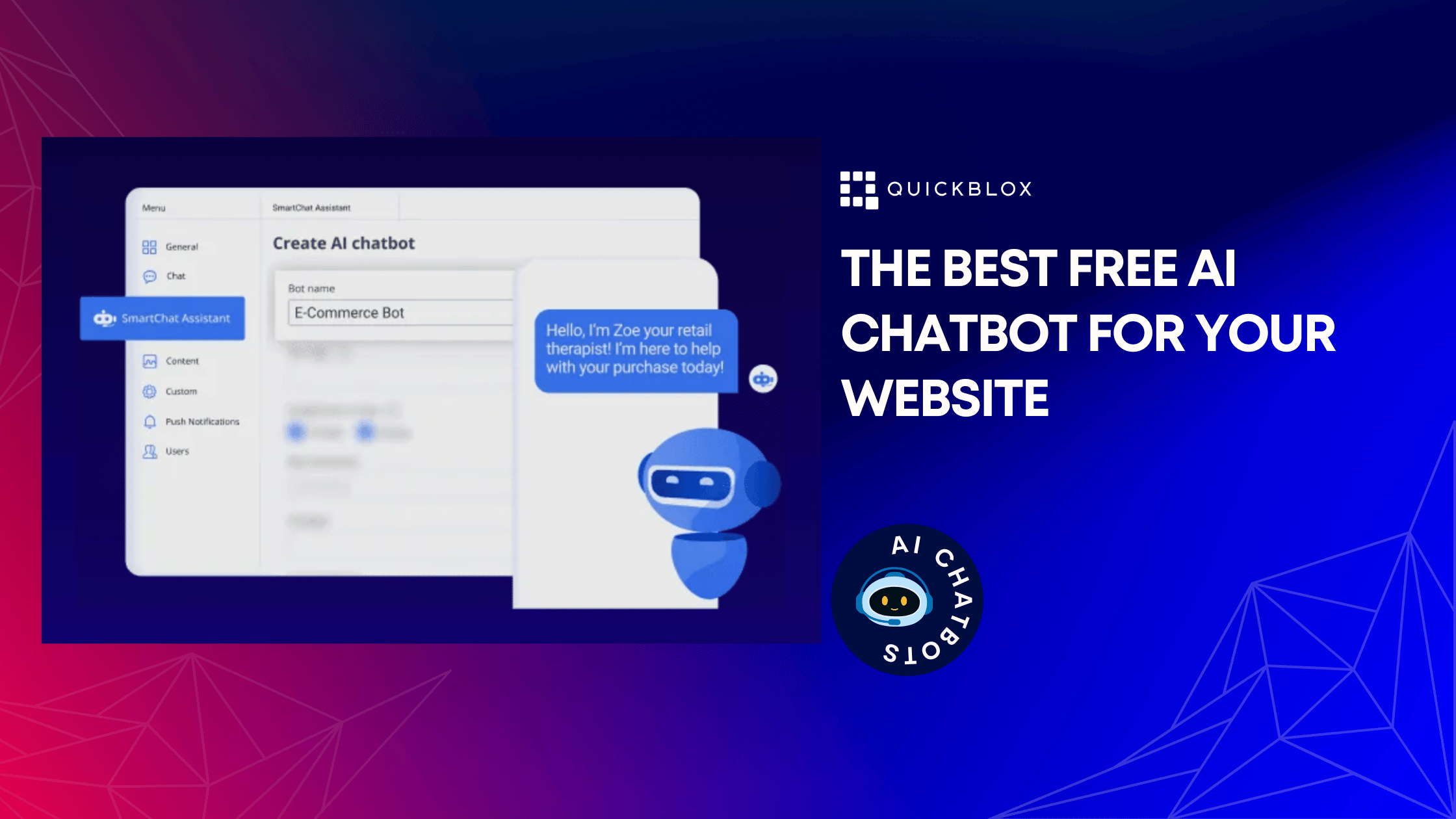
Summary: Real-time messaging has gone from “nice-to-have” to essential in modern apps. This blog shows why a real time chat app matters, what to expect from a chat API service, and how developers can integrate features without building everything from scratch.
Table of Contents
Introduction: Real-Time or Left Behind
If you’re building an app today, chances are someone’s already asked: “Can we add chat?” Maybe it’s for customer support, maybe it’s for users to talk to each other, or maybe it’s just a way to keep people more engaged. And if you’re a developer, your first thought is probably: sounds cool, but do I really want to open that can of worms?
It’s a fair question. Real-time messaging isn’t as simple as throwing a text box on the screen. Behind the scenes you’re dealing with servers, scaling, security, push notifications, offline users, syncing across devices… the list adds up fast. That’s why a lot of teams hesitate, or try to push it down the roadmap.
But here’s the reality: users expect it. Whether it’s a real time chat app for healthcare, gaming, or customer support, people are used to messaging that’s instant, reliable, and always available. If your app doesn’t have it, it can feel incomplete — like something’s missing.
The good news is you don’t have to reinvent the wheel anymore. Modern chat API services make it way easier to drop messaging into your app or website without spending months building infrastructure. What used to be a nightmare project has become almost plug-and-play.
This article breaks down what real-time chat software actually is, why it’s worth adding, and how you can get started without getting buried in complexity.
What is Real-Time Chat Software (and Why It Matters)
So what do we actually mean when we say real-time chat? At its simplest, it’s messaging that feels instant. You type, you hit send, and the other person sees it right away — no waiting around, no refreshing, no “check back later.”
Technically, real-time chat software uses persistent connections (think WebSockets or similar protocols) to keep a live channel open between devices. That’s how a real time messaging app like WhatsApp or Slack can show you typing indicators, delivery receipts, and messages across multiple devices almost instantly.
Why does it matter? Because people don’t think about the tech — they just notice when it’s missing. If a message lags, or doesn’t sync between their phone and laptop, users get frustrated fast. The smoother and faster the chat feels, the more natural your app feels overall.
And it’s not just social apps anymore. A real time chat app is becoming standard in healthcare (patient-doctor communication), e-commerce (live support), gaming (coordinating teams), and even enterprise tools (collaboration). In all of those cases, chat isn’t an extra feature — it’s the backbone of how users interact.
That’s why developers who are “chat curious” usually hit the same realization: if you want your app to feel modern, you need some kind of realtime chat built in.
Learn more about – A Beginner’s Guide to Chat App Architecture
The Developer’s Dilemma: Build vs Borrow
Here’s the thing: you can build chat yourself. Plenty of developers have tried. But the moment you go beyond a simple message box, the to-do list gets long fast:
- Setting up servers to handle thousands of open connections.
- Making sure messages deliver instantly, even when networks are flaky.
- Storing history, syncing across devices, and handling offline users.
- Adding push notifications so people know they’ve got a message.
- Locking down security with encryption and (if you’re in healthcare or finance) compliance rules like HIPAA or GDPR.
It’s not impossible — but it’s months (sometimes years) of work that takes time away from the features that actually make your app unique.
That’s why more teams are turning to a chat messaging API or chat API service. Instead of reinventing the wheel, you plug into infrastructure that’s already tested and scaled. You call the API to send a message, get receipts, create group chats, whatever you need — and the backend heavy lifting is done for you.
Think of it like cell towers. You could try building your own nationwide network so your app can make calls… or you just rent space on the towers that already exist.
Same idea here: a chat API for mobile apps or web lets you drop in the essentials without building the entire system from scratch.
For most dev teams, the question isn’t “can we build this?” — it’s “do we really want to spend our time building this, when we could be shipping the features our users actually care about?”
Core Features of a Real-Time Chat App
When you’re looking at building (or buying) a real time chat app, the feature list can get overwhelming. But at the core, a good solution should cover these basics:
The essentials:
- 1:1 messaging – private chats that just work.
- Group chat – people will always want group spaces, whether it’s team projects or gaming squads.
- Message history – users expect to scroll back through past conversations.
- Read receipts & typing indicators – those little dots and checkmarks that make chat feel alive.
- Push notifications – otherwise, users never know a message is waiting.
Nice-to-haves that quickly become “musts”:
- Offline support & sync – users drop in and out of Wi-Fi constantly; chat should catch up automatically.
- Media & file sharing – photos, PDFs, voice notes, even video clips.
- Cross-platform support – a solid chat API for mobile app development should feel consistent across iOS, Android, and web.
Modern extras:
- AI features – translation, smart replies, summarization, or chatbot assistants that take pressure off human support.
- Security baked in – encryption by default, with compliance options for healthcare or finance.
When you’re evaluating a chat messaging API, look at more than just the shiny extras. The invisible stuff — message delivery, sync, notifications — is what makes or breaks the user experience. If those feel slow or unreliable, users notice instantly.
Why Adding Real-Time Chat Enhances Apps
So why even bother adding chat? Because in almost every industry, real-time messaging isn’t just nice to have anymore — it’s expected. Here are a few places where a real time chat app can completely change the user experience:
Healthcare
- Patients can message doctors or nurses directly, saving phone calls and long wait times.
- Telehealth apps can add secure chat alongside video consults.
- With HIPAA-ready real time chat software, providers stay compliant while still offering modern communication.
Customer Support
- Live chat on websites or apps cuts response time compared to email or phone.
- Users prefer a chat API service that gives them instant help rather than filling out a ticket form.
Gaming & Social
- Multiplayer games rely on team chat — without it, coordination falls apart.
- Community apps use chat to keep users engaged and coming back.
Productivity & Remote Work
- Teams depend on real time messaging apps to stay connected, whether they’re in the same office or halfway across the globe.
- Group chat, file sharing, and notifications help replace in-person conversations.
In each of these cases, chat doesn’t just “add a feature.” It creates stickiness. It keeps users engaged longer, makes apps more useful, and often becomes the primary way people interact. Without it, your app risks feeling flat or outdated.
How Easy is Chat Integration, Really?
If you’ve ever thought, “real-time chat sounds great, but I don’t have months to build it,” you’re not alone. A lot of developers imagine they’ll need to spin up servers, manage sockets, write syncing logic, and deal with all the edge cases. That used to be true — but not anymore.
Modern chat API services take most of that pain away. Instead of starting from scratch, you get:
- SDKs – pre-built code libraries for iOS, Android, and web, so you can hook into a chat API for mobile app development without writing all the boilerplate yourself.
- UI Kits – ready-to-go chat windows, input bars, and message bubbles you can drop into your app. Customize them if you want, but you don’t have to design everything from zero.
- Documentation & samples – most providers give quick-start guides and sample apps so you can see a real time chat app running in minutes.
And the best part? APIs are built to scale. You don’t have to worry about whether your test project can grow into something bigger — the infrastructure is already built for that.
In short, adding a real time messaging API to your app is less about “building” and more about “plugging in.” Once the basics are running, you can focus on making the chat experience fit your users instead of fighting backend issues.
QuickBlox’s Take
At QuickBlox, we focus on giving developers the tools they actually need to get chat and communication features running quickly, without forcing them into a rigid setup:
- Proven SDKs & APIs – for web, iOS, and Android, built to support everything from lightweight apps to enterprise-level deployments.
- UI Kits – ready-made chat interfaces and components you can drop into your app and customize.
- AI Extensions – features like translation, summarization, and chatbot assistants that plug directly into chat flows.
- Q-Consultation – a white-label consultation app that combines video, chat, and scheduling. It’s ideal for healthcare, but also works for any industry that needs secure, branded video consultation tools.
- HIPAA compliance – options for teams who need to meet strict data security and regulatory requirements.
The goal isn’t to overwhelm you with features. It’s to provide a chat API service that’s reliable, flexible, and practical enough to fit real-world apps across industries.
Conclusion: Real-Time as a Foundation
At this point, real-time chat isn’t a bonus feature anymore — it’s part of what makes an app feel modern. Whether it’s support, social, gaming, or professional consultations, people expect to message instantly and reliably. If that’s missing, your app will feel unfinished.
The good news is that you don’t need to spend months building the backend yourself. With today’s real time chat software and chat API services, adding messaging is more about plugging in than reinventing the wheel. You can focus on the parts of your product that make it unique, while the infrastructure works quietly in the background.
If you’re exploring options, QuickBlox offers SDKs, UI Kits, AI tools, and white-label solutions like Q-Consultation to help you get a real time chat app running fast — and ready to scale when your users need it.
Talk to a sales expert
Learn more about our products and get your questions answered.
Contact sales
FAQs
What is a chat API and how is it used in mobile apps?
A chat API is basically a shortcut for adding messaging. Instead of building servers and sync logic yourself, you hook into the API. In a chat API for mobile apps, you just drop in the SDK and users can start chatting on iOS or Android.
What features should I look for in a chat API service?
At the very least you’ll want 1:1 chat, groups, message history, and push notifications. A decent chat API service usually also covers offline support, file sharing, and works across web and mobile.
How does real-time chat software work technically?
In simple terms, real time chat software keeps a live connection open (often with WebSockets). That’s what makes messages, typing dots, and read receipts show up instantly instead of lagging.
What are the advantages of using a chat messaging API over building chat from scratch?
Time and headaches. A chat messaging API already handles the messy stuff — scaling, security, notifications. You get to skip months of backend work and focus on your app’s actual features.
How do chat APIs handle security and data privacy?
Most have encryption built in, and the better ones support HIPAA or GDPR setups too. A good real time messaging APIwill give you options to keep chats safe without you coding it all from scratch.
What platforms do chat APIs typically support for mobile app development?
Usually the big three: iOS, Android, and web. A proper chat API for mobile apps should keep the experience consistent across devices.
How to get started with integrating a real-time messaging API into my app?
Sign up, grab the SDK, and follow a quick-start guide. Within minutes you can have a real time messaging app running — then customize from there.








